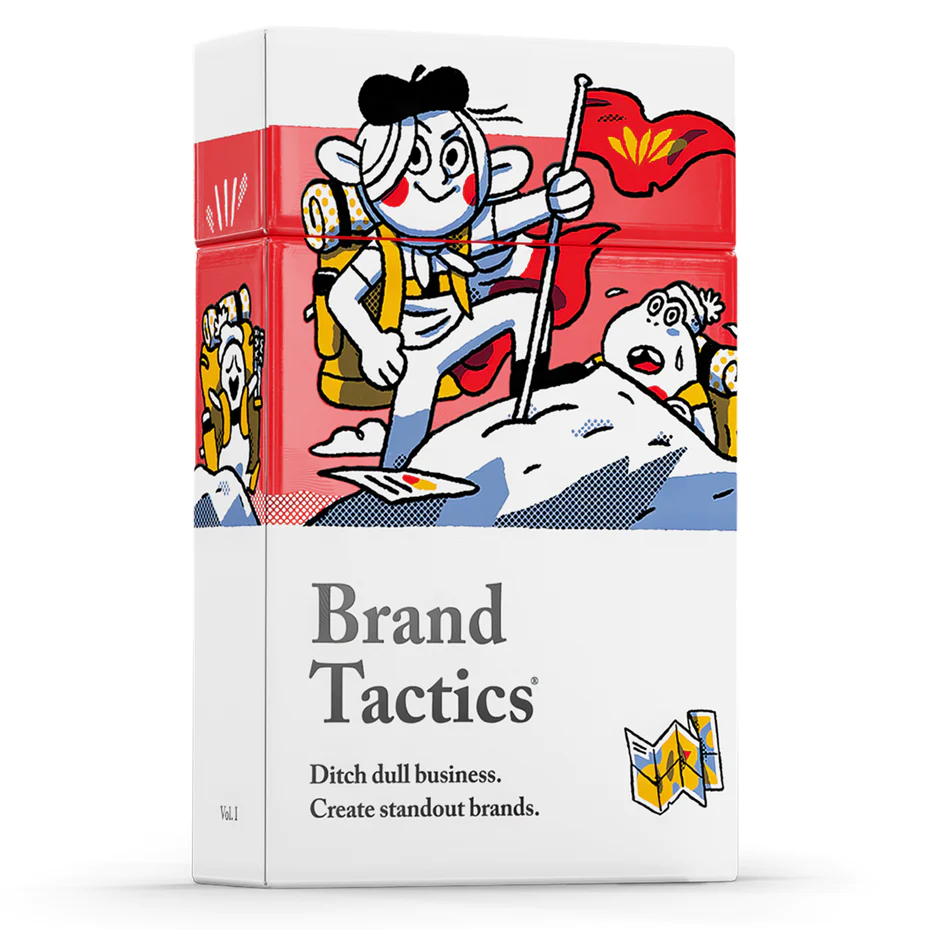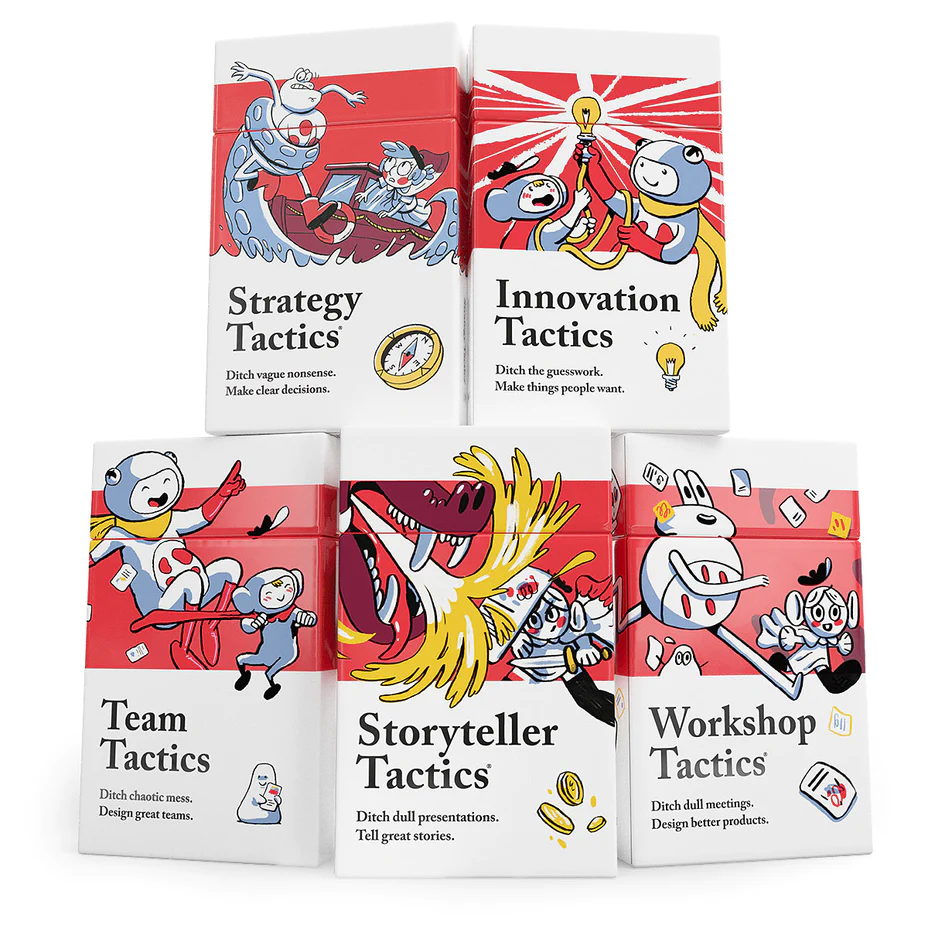What is a Brand Strategy?
Our Big Long List of Brand Strategy provides YOU the framework to build your brand.
Your brand strategy roadmap to perpetual, divergent brand innovation
Ready to build your brand?
Partner with Murdock Media Production
Our Brand Strategy Services:
Brand Bible Development
Your brand bible contains your brand platform and exemplar image, copy and content to establish the foundation for future content creation.
Brand Communications Platform
Your Brand Communications Platform connects your Brand Platform to key messages targeted to each of your customer demographics.
Brand Tactics Teamwork Modeling
Brand Tactics Teamwork Modeling is a collaborative process resulting in actionable steps you and your team put into action to generate targeted messaging results.
Brand Training
Develop foundational understanding of branding and brand strategy within your team. Develop teamwork and a sense of buy-in from your team.
Brand Management
Develop the knowledge, skills and tools to set and measure objectives in areas like awareness, attitude, percetion, belief, and behavior around brand attributes.
Brand Differentiation
Establish the foundational attitudes and features that differentiate your brand from the competition. Develop a focus and position your brand to stand out.
Tell us a little about your brand.
Understanding Brand Strategy: Your Brand Srategy Roadmap
A Brand Strategy is a comprehensive plan developed by a business or organization to establish and manage its brand in a way that aligns with its overall goals and objectives. It serves as a roadmap for building, defining, and communicating the brand to its target audience. Our Brand Strategy guide identifies the elements, processes, and ideas any organization can use to develop and maintain an original, stand out brand that can evolve in relationship with your company, and your customers.
A well-defined Brand Strategy helps create a strong and consistent brand identity, which allows you to differentiate your organization, it’s products, services, and ideas in the market. The objective is to build customer loyalty by creating resilient relationships that can stand the test of time.
Here are some key components of a Brand Strategy:
-
-
Brand Purpose:
This defines why the brand exists beyond just making money. It articulates the brand’s mission, values, and the impact it aims to make in the world.
-
Target Audience:
Identifying and understanding the specific demographics, psychographics, and preferences of the target customers is crucial. This helps tailor the brand message and experience to resonate with the intended audience.
-
Brand Positioning:
This determines where the brand stands in relation to its competitors and what unique value it offers to customers. It involves defining the brand’s unique selling proposition (USP).
-
Brand Identity:
This encompasses the visual elements of the brand, such as logos, color schemes, typography, and design guidelines. A consistent and visually appealing identity helps in brand recognition.
-
Brand Voice and Messaging:
Establishing a brand’s tone of voice and messaging style is important for conveying its personality and values through all communication channels.
-
Brand Guidelines:
These provide a set of rules and standards for using the brand’s visual and verbal elements consistently across all marketing materials and touchpoints.
-
Brand Experience:
This includes the overall experience customers have when interacting with the brand, whether through products, services, customer support, or any other touchpoint.
-
Brand Tactics:
These are the actionable practices brand managers use to create standout products, services, ideas, and experiences. Get an introduction to Brand Tactics here.
-
Consistency in this experience is key.
-
Brand Storytelling:
Developing a compelling and authentic brand story can help connect with customers on an emotional level, making the brand more relatable and memorable.
-
Brand Extensions:
Deciding whether and how to expand the brand into new products, services, or markets, while maintaining consistency with the core brand.
-
Monitoring and Adaptation:
Regularly assessing the brand’s performance and market feedback is important for making adjustments and improvements to the brand strategy as needed.
A well-crafted brand strategy helps guide decision-making, ensure consistency, and build brand equity over time. It is a valuable tool for creating a strong and enduring brand presence in the market.
Go beyond checklists! Develop your brand-based marketing techniques with our Brand Builders marketing class…
Gain the Knowledge and Skills to Build Your Brand
Take my online class The Brand Builder’s Workshop: The branding class for artists, small businesses and anyone who wants to make a big impact.
Who should use a brand strategy?
A brand strategy is a valuable tool for a wide range of entities, including businesses, organizations, and individuals who want to establish a strong and recognizable brand presence.
Ask yourself, how much does your product need to shape attitudes and beliefs in order to result in adoption by your audience? If your product is common and sells consistently through dealer networks and product availability, branding might be light, but when buyers know all of the options and hold opinions and beliefs about their choices, branding becomes much more important. When an innovator sets out to build something never seen before, branding often takes the lead. Many new products fall by the wayside simply because audiences couldn’t see how the “new” could fit into their lives.
Here are some examples of who should use a brand strategy:
-
Businesses:
Small, medium, and large businesses in various industries can benefit from a well-defined brand strategy. It helps them differentiate their products or services, connect with customers, and build brand equity.
-
Startups:
New businesses, in particular, can use a brand strategy to create a strong brand identity and establish themselves in the market. It’s essential for building awareness and trust.
-
Nonprofit Organizations:
Nonprofits can use brand strategies to communicate their mission, values, and impact effectively, helping them connect with donors, volunteers, and the communities they serve.
-
Government Agencies:
Government entities can develop brand strategies to enhance their public image, improve citizen engagement, and communicate important messages or initiatives.
Personal Brands: Individuals, such as entrepreneurs, influencers, and professionals, can use brand strategies to build and promote their personal brands. This is often important for career development and personal branding. -
Activists and Mission Driven Organizations:
Those who want to see change in the world can benefit from the tools and techniques developed by brand strategists to convey clear, powerful and motivating messages to others in order to incite change.
-
Educational Institutions:
Schools, colleges, and universities can use brand strategies to attract students, faculty, and funding while conveying their educational mission and values.
-
Cultural and Arts Institutions:
Museums, galleries, theaters, and cultural organizations can develop brand strategies to engage with the public, attract visitors, and secure funding.
Events and Conferences: Organizers of events and conferences can create brand strategies to promote and differentiate their events, attracting attendees and sponsors. -
Products and Services:
Even individual products or services can have their own brand strategies within a larger brand portfolio. This helps in creating distinct identities and marketing approaches for each offering.
-
Churches, Philosophical Organizations and Religions:
Conveying the value of compelling ideas and encouraging individuals to join in a shared framework is closely related to brand strategy. Much of the language of branding and marketing comes from religion – conversion, brand evangelism, brand belief. Philosophical and religious organizations can adopt lessons from branding – many that were developed from religious tomes.
Healthcare Organizations: Hospitals, medical practices, and healthcare providers can use brand strategies to establish trust, promote services, and communicate their commitment to patient care.
Ultimately, anyone or any entity that wants to create a consistent, recognizable, and compelling brand presence should consider using a brand strategy. It helps guide decision-making, communication, and marketing efforts, ensuring that the brand resonates with its target audience and stands out in the marketplace.
Make Branding Tactical
Apply these techniques for everyday results
The Brand Tactics deck by Pip Decks provides 54 cards with recipes and processes to clarify the scope and goals of their brand, align messaging with audience beliefs, establish REAL differentiation, and discover new ways to imagine their brand’s position in the market. With 54 actionable recipe cards, your team will have the steps it needs to create and maintain a vital brand.
Want to get the Brand Tactics deck right away? Grab yours with a 15% discount by using our Affiliate Link.
How can small and medium sized businesses benefit from brand strategy?
Small and medium-sized businesses (SMBs) can benefit significantly from a well-developed brand strategy.
Here are some ways in which brand strategy can be advantageous for SMBs:
-
Differentiation:
A brand strategy helps SMBs stand out in a crowded marketplace. It allows them to define what makes their business unique and communicate that distinctiveness to their target audience. This can be a powerful tool for competing with larger, more established competitors.
-
Credibility and Trust:
A strong and consistent brand presence instills trust and credibility in customers. SMBs that invest in branding demonstrate a commitment to quality and professionalism, which can lead to increased trust and customer loyalty.
-
Recognition:
Building a recognizable brand helps customers easily identify your products or services. When consumers have a positive brand experience, they are more likely to choose your SMB over competitors, leading to increased sales.
-
Consistency:
A brand strategy provides guidelines for consistent branding across all customer touchpoints, from the website to social media, marketing materials, and customer service. Consistency in branding enhances the overall customer experience.
-
Brand Loyalty:
An effective brand strategy can create an emotional connection with customers. This emotional bond often leads to brand loyalty, with customers choosing an SMB’s products or services over alternatives based on their positive brand experiences.
-
Pricing Flexibility:
Strong brands can often command higher prices for their products or services. Customers are willing to pay more for brands they trust and perceive as offering higher value.
-
Expansion Opportunities:
A well-established brand can open doors to new markets and opportunities. SMBs can leverage their brand reputation to explore new product lines or geographic markets with a degree of credibility and recognition.
-
Marketing Efficiency:
A clear brand strategy provides a foundation for marketing efforts. SMBs can develop more effective marketing campaigns and target their messaging to better connect with their ideal customers.
-
Employee Alignment:
A strong brand strategy can also help align employees with the company’s mission, values, and goals. It can foster a sense of belonging and purpose among staff, leading to improved morale and productivity.
-
Long-Term Sustainability:
A brand strategy is an investment in the long-term sustainability of the business. It helps create a brand identity that can endure changing market conditions and trends.
-
Competitive Advantage:
A well-executed brand strategy can give SMBs a competitive edge by positioning them as the preferred choice in their niche or industry.
It’s important for SMBs to understand that a brand strategy doesn’t necessarily require a massive budget or resources. While large corporations may invest heavily in branding, SMBs can develop effective brand strategies that are tailored to their specific needs, budgets, and goals. This could involve activities like crafting a compelling brand story, designing a memorable logo, establishing a consistent online and offline presence, and providing excellent customer service. Over time, these efforts can pay off with increased brand recognition and customer loyalty, ultimately leading to business growth.
What are the benefits of brand strategy?
Fight commodification, differentiate yourself in a noisy market, build human connections through shared values
Brand strategy offers several significant benefits to businesses and organizations.
Here are some of the key advantages of having a well-defined brand strategy:
-
Differentiation:
Brand strategy helps a business distinguish itself from competitors in the marketplace. It defines what makes the brand unique and communicates those distinctions to the target audience, enabling the business to stand out.
-
Recognition:
A strong brand strategy creates a recognizable brand identity. When customers see the brand’s visual elements or hear its messaging, they can quickly identify and remember it. This recognition is valuable for attracting and retaining customers.
-
Trust and Credibility:
A consistent brand strategy builds trust and credibility with customers. It conveys a commitment to quality, professionalism, and customer satisfaction, which can lead to increased trust and loyalty.
-
Customer Loyalty:
Brands that resonate with customers emotionally and consistently deliver positive experiences tend to foster brand loyalty. Loyal customers are more likely to repeat purchases and become brand advocates.
-
Pricing Power:
Strong brands can often command premium prices for their products or services. Customers are willing to pay more for brands they trust and perceive as offering higher value.
Marketing -
Efficiency:
A well-defined brand strategy serves as a foundation for marketing efforts. It enables businesses to create more effective marketing campaigns, target the right audience, and convey a compelling brand story.
-
Consistency:
Brand strategy provides guidelines for maintaining a consistent brand presence across all customer touchpoints, from advertising and social media to packaging and customer service. Consistency enhances the customer experience and reinforces the brand’s identity.
-
Expansion Opportunities:
An established brand can open doors to new markets and opportunities. It provides a degree of credibility and recognition, allowing businesses to explore new product lines or geographic markets.
-
Employee Alignment:
A clear brand strategy can help align employees with the company’s mission, values, and goals. It fosters a sense of purpose and belonging among staff, leading to improved morale and productivity.
-
Long-Term Sustainability:
A brand strategy is an investment in the long-term sustainability of the business. It helps create a brand identity that can endure changing market conditions and trends.
-
Competitive Advantage:
A well-executed brand strategy can provide a competitive edge by positioning the business as the preferred choice in its niche or industry.
Emotional Connection: Brand strategy can create an emotional connection with customers by telling a compelling brand story, aligning with their values, and offering experiences that resonate on a personal level. -
Brand Equity:
Over time, a successful brand strategy can build brand equity, which is the intangible asset of the brand’s value. Brand equity can translate into increased market share, higher profits, and greater resilience during economic downturns.
-
Attracting Talent:
Strong brands can attract top talent. Job seekers are often drawn to companies with well-defined brand identities that reflect their own values and aspirations.
-
Risk Mitigation:
A well-established brand can help mitigate the impact of negative events or crises, as customers may be more forgiving and loyal to brands they trust.
In summary, a thoughtfully developed brand strategy is a valuable asset that can help businesses and organizations achieve a range of competitive advantages, enhance customer relationships, and drive long-term success.
What is a brand platform?
A brand platform, also known as a brand foundation or brand platform statement, is a foundational document or framework that encapsulates the essential elements of a brand’s identity and strategy. It serves as a reference point for all branding and marketing efforts, providing clarity and consistency in how a brand is presented to its target audience.
A brand platform typically includes the following key components:
-
Brand Mission:
This defines the brand’s purpose and why it exists beyond making a profit. It articulates the broader societal or customer-centric goals that the brand aims to achieve.
-
Brand Vision:
The brand’s long-term aspirations and what it envisions for the future. It represents the brand’s ultimate goal and direction.
-
Brand Values:
The core principles and values that guide the brand’s actions and decision-making. These values help in maintaining consistency and authenticity.
-
Brand Promise:
A clear and concise statement of what customers can expect from the brand. It sets expectations for the brand experience.
-
Brand Positioning:
This component defines how the brand is positioned in the market relative to competitors. It often includes the unique selling proposition (USP) and the target audience the brand seeks to serve.
-
Brand Personality:
A description of the brand’s human-like traits and characteristics. This helps in establishing a relatable and consistent tone in brand communication.
-
Brand Story:
An engaging narrative that communicates the brand’s history, values, and mission. It provides a storytelling framework for brand messaging.
-
Target Audience:
A detailed description of the ideal customer or audience segments that the brand is trying to reach. This includes demographics, psychographics, and other relevant characteristics.
-
Brand Voice and Messaging:
Guidelines for the tone, language, and messaging style that should be used when communicating the brand. This ensures consistency in brand communication.
-
Brand Visual Identity:
Elements such as the logo, color palette, typography, and design guidelines that represent the brand visually. These elements create a consistent and recognizable brand identity.
-
Brand Guidelines:
Rules and standards for using the brand’s visual and verbal elements consistently across all marketing materials and touchpoints.
-
Brand Extension:
If applicable, the brand platform may outline how the brand can be extended into new products, services, or markets while maintaining alignment with the core brand identity.
The brand platform serves as a reference for both internal and external stakeholders, ensuring that everyone involved with the brand understands its identity, values, and strategic direction. It helps maintain consistency and cohesiveness in branding and marketing efforts, ultimately strengthening the brand’s position in the market and its relationship with customers.
How do businesses build a brand strategy?
“I want to live forever, I want to learn how to fly – Brand!”
Building a brand strategy is a structured process that involves several key steps. The first three steps are all about evaluating whether you can reach a viable demographic and if the market is large enough to sustain a business. Everything else is about building, establishing, and evolving your brand over time.
Here is a general guideline for businesses to develop an effective brand strategy:
-
Define Your Business and Objectives:
Start by clearly defining your business, its mission, and its core values. Identify your business goals, including short-term and long-term objectives that your brand strategy should support.
-
Understand Your Target Audience:
Conduct in-depth research to understand your target audience’s demographics, psychographics, behaviors, and preferences.
Create detailed buyer personas to represent different segments of your audience. -
Analyze Your Competition:
Evaluate your competitors to understand their strengths and weaknesses, as well as their branding strategies.
Identify opportunities to differentiate your brand in the marketplace. -
Develop Your Brand Identity:
Create a compelling and memorable brand name, logo, color palette, typography, and design elements.
Ensure that your visual identity aligns with your brand’s values and resonates with your target audience. -
Craft Your Brand Story:
Develop a brand narrative that communicates your history, values, mission, and vision. Make it engaging and relatable.
Use storytelling to connect emotionally with your audience. -
Define Your Brand Positioning:
Determine how you want your brand to be perceived relative to your competitors. Identify your unique selling proposition (USP) and the benefits your brand offers.
Consider what makes your brand distinct and valuable to your target audience.
Establish Your Brand Voice and -
Messaging:
Define the tone, language, and messaging style that align with your brand’s personality.
Create key messaging points that articulate your brand’s value and benefits. -
Create Brand Guidelines:
Develop comprehensive brand guidelines that outline how to use your visual and verbal elements consistently across all marketing materials and touchpoints.
Include rules for logo usage, color codes, typography, and tone of voice. -
Develop Marketing and Communication Strategies:
Create a plan for reaching your target audience through various marketing channels, such as advertising, social media, content marketing, and public relations.
Tailor your messaging and content to align with your brand strategy. -
Implement and Monitor:
Begin executing your brand strategy across all customer touchpoints and marketing efforts.
Continuously monitor and measure the impact of your brand strategy, making adjustments as needed based on feedback and results. -
Build Brand Consistency:
Ensure that your brand is consistently represented in every aspect of your business, from customer interactions to products and services.
Train employees and stakeholders on your brand values and guidelines. -
Cultivate Brand Loyalty:
Engage with your audience and deliver a consistent, positive brand experience.
Encourage customer feedback, reviews, and loyalty programs to foster brand loyalty. -
Adapt and Evolve:
The market and customer preferences may change over time. Be prepared to adapt and evolve your brand strategy as needed to remain relevant and effective.
It’s important to involve key stakeholders in the brand strategy development process and, if necessary, seek the expertise of branding professionals or agencies. A well-crafted brand strategy should serve as a guiding document for your business, helping you build a strong and enduring brand presence in the market.
Create brand messaging
Develop brand visual identity. It can include brand book, but it can also be an online asset library or micro-site.
When you have created effective brand messaging, you are able to consistently convey your brand’s value, personality, and unique selling points to your target audience.
Here are steps to help businesses create compelling brand messaging:
-
Understand Your Audience:
Begin by gaining a deep understanding of your target audience, including their demographics, psychographics, pain points, and aspirations. Your messaging should resonate with their needs and preferences.
-
Clarify Your Unique Selling Proposition (USP):
Identify what sets your brand apart from competitors. Determine the specific benefits or attributes that make your products or services unique and valuable to your customers.
-
Craft a Brand Positioning Statement:
Develop a concise and clear brand positioning statement that articulates your brand’s unique value in the marketplace. This statement should answer the question, “Why should customers choose your brand?”
-
Define Your Brand Voice:
Determine the tone and personality of your brand’s voice. Is your brand playful, professional, authoritative, friendly, or something else? This voice should be consistent across all messaging.
-
Create Core Messages:
Develop core messaging points that encapsulate the essence of your brand. These messages should be clear, memorable, and aligned with your brand’s values and positioning.
-
Focus on Customer Benefits:
Rather than solely highlighting product features, emphasize the benefits that your customers will experience. Explain how your products or services solve their problems or make their lives better.
-
Use Storytelling:
Craft engaging brand stories that connect with your audience emotionally. Storytelling humanizes your brand and helps customers relate to it.
-
Keep It Simple and Clear:
Avoid using jargon, complex language, or vague terminology. Your messaging should be easy to understand and concise.
-
Be Authentic:
Authenticity is crucial in brand messaging. Be true to your brand’s values and promises, as customers value transparency and honesty.
-
Align with Your Brand Strategy:
Ensure that your messaging aligns with your brand’s overall strategy, including its visual identity, values, and mission.
-
Test and Refine:
Before launching your messaging, test it with a sample of your target audience to gather feedback. Use this feedback to refine and improve your messaging.
-
Be Consistent:
Maintain consistency in your messaging across all marketing channels, including your website, social media, advertising, and customer support. Consistency builds brand recognition and trust.
-
Adapt to Different Channels:
Tailor your messaging for different marketing channels while maintaining a consistent core message. What works in a social media post might differ from what works in a brochure or email campaign.
-
Monitor and Adjust:
Continuously monitor the effectiveness of your messaging through analytics and customer feedback. Be prepared to adjust your messaging strategy in response to changing market conditions or audience preferences.
-
Evolve Over Time:
As your brand and market evolve, so should your messaging. Regularly revisit and update your brand messaging to ensure it remains relevant and effective.
Remember that brand messaging is not a one-time effort; it should be an ongoing process that evolves with your business and your audience. Effective brand messaging can have a profound impact on your brand’s visibility, customer engagement, and overall success.
Want to deepen your ability to apply story tactics through your brand?
Sign up for Brand Story Tactics coaching to develop communications and channels from the position of brand.
Brand platforms tend to be developed, then slipped in a drawer or stored in a Dropbox folder but rarely used. Through one-on-one coaching, we will develop your communications platform and messaging keeping your brand position in mind. This a-la-carte option allows you to buy as many one-hour sessions as you need. In our first session, we will create an agenda and plot out a timeline for clarity and accountability on both sides.
Evolve and adapt your brand over time
Evolving and adapting your brand over time is essential to remain relevant and competitive in a constantly changing business landscape.
Here are steps to help you effectively evolve and adapt your brand:
-
Assess Your Current Brand:
Start by conducting a comprehensive assessment of your current brand. Analyze your brand’s strengths, weaknesses, opportunities, and threats (SWOT analysis).
Identify areas where your brand may need improvement, whether it’s in your visual identity, messaging, product offerings, or customer experience. -
Market Research:
Continuously conduct market research to understand changing customer preferences, emerging trends, and shifts in the competitive landscape.
Stay updated on your target audience’s needs and expectations. -
Revisit Your Brand Strategy:
Reevaluate your brand strategy, including your brand mission, vision, values, and positioning. Ensure that they align with your current business goals and resonate with your target audience.
-
Customer Feedback:
Actively seek and listen to customer feedback. Customer insights can reveal areas where your brand may need adjustment or enhancement.
Use surveys, focus groups, social media interactions, and customer reviews to gather valuable feedback. -
Competitive Analysis:
Regularly analyze your competitors’ branding strategies and offerings. Identify opportunities to differentiate your brand or respond to market shifts.
-
Stay True to Core Values:
While adapting your brand, remain true to your core values and mission. Any changes should still reflect the essence of your brand and what it stands for.
-
Brand Refresh or Rebranding:
Decide whether your brand needs a complete rebrand or a brand refresh. A rebrand involves significant changes to your brand identity, while a refresh may involve smaller updates to modernize and revitalize the brand.
-
Digital Presence:
Update your online presence, including your website and social media profiles, to reflect any changes in your brand identity, messaging, and visual elements.
-
Product or Service Enhancements:
Innovate and improve your products or services to meet evolving customer demands and industry standards. Ensure your branding reflects these improvements.
-
Cultural and Social Relevance:
Stay aware of societal changes and cultural shifts. Your brand should resonate with contemporary social and cultural norms and values.
-
Collaborate with Experts:
Consider working with branding professionals or agencies who can provide guidance and expertise in rebranding or evolving your brand strategy.
-
Employee Engagement:
Involve your employees in the process, as they are often the closest to your customers and can provide valuable insights into areas that need improvement.
-
Gradual Changes:
When making significant changes, consider a phased approach to allow your audience to adapt to the new brand slowly. Gradual changes can help maintain customer loyalty.
-
Communicate Changes:
Clearly communicate any changes to your audience. Be transparent about the reasons behind the changes and the benefits they can expect.
-
Test and Measure:
Test your new brand elements and messaging with a subset of your target audience before a full rollout. Monitor key performance indicators to gauge the success of the changes.
-
Stay Agile:
Be prepared to adjust and adapt as needed based on feedback and performance data. The ability to pivot quickly can be an advantage in a rapidly changing market.
Remember that evolving your brand doesn’t mean abandoning your brand’s history or values. It’s about finding ways to keep your brand fresh, relevant, and appealing to your target audience while staying true to your core identity. An evolving brand is better equipped to thrive in an ever-changing business environment.
The deck is built to develop and refine your brand through a flexible structure that provides the right “recipe” at the right time to take your brand to the next level.
What do you get with the Brand Tactics deck complete package?
- a “brand building system” to identify insights and make them actionable within your unique brand position
- “recipes,” that put you in the right frame to discover insights and take action (differentiate, discover, transform, execute and expand)
- “strategy” – techniques develop your pathway to unique, valuable solutions
- “keep on truckin’” – tools to create a processes that keeps your brand vital and current with audiences
- “iconic leaps” – vision to establish an identity that stands above and beyond the fray
- a digital set of cards you can use in presentations or add to your device so you’ve got the tools at your fingertips
- an online portal with video based trainings on each and every tactic in the deck
Develop your brand with the Brand Tactics deck
We wanted to learn everything we could about brand storytelling. This is what we found out…
Build a Brand Multiverse
We wanted to learn everything we could about brand storytelling. After learning how DC and Marvel maintain their brands this is what we found out…
Get to know Pip Decks
Meet all of the decks in the Pip Decks line and get the tools to innovate, create strategy, tell better stories, and develop powerful teams.





